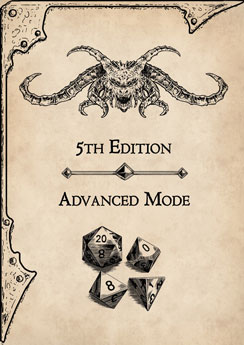Large beast (dinosaur), unaligned
Armor Class 14 (natural armor)
Hit Points 65 (10d10 + 10)
Speed 10 ft., swim 40 ft.
Proficiency Bonus +3
Proficiency Bonus +5 (5th Edition Advanced Mode)
| STR | DEX | CON | INT | WIS | CHA |
|---|---|---|---|---|---|
| 18 (+4) | 14 (+2) | 12 (+1) | 2 (-4) | 12 (+1) | 6 (-2) |
Saving Throws Str +7
Skills Perception +4, Stealth +5
Senses passive Perception 14
Languages –
Challenge 5 (1,800 XP)
Amphibious. The tanystropheus can breathe air and water.
Surprise Attack. When the tanystropheus attacks from underwater with its neck, it has advantage on the attack roll in the first round of combat.
ACTIONS
- Bite. Melee Weapon Attack: +7 to hit, reach 15 ft., one target. Hit: 9 (1d10 + 4) piercing damage. If the target is a Medium or smaller creature, it is grappled (escape DC 14). Until this grapple ends, the target is restrained, and the tanystropheus can’t bite another target. The tanystropheus can drag the grappled target up to half its swimming speed into the water.
- Tail Slap. Melee Weapon Attack: +6 to hit, reach 10 ft., one target. Hit: 7 (1d6 + 4) bludgeoning damage. If the target is a creature, it must succeed on a DC 14 Strength saving throw or be knocked prone.
5th Edition Advanced Mode
Limiting the power of a character and making the overall difficulty of the game harder, does not reduce the creativity, indeed it does quite the opposite.
The Game Master has the option to use any and all of the instances proposed in this guide, or just some of them according to their preference.
It is the lack of something that move and motivate characters, not the abundance of it
DESCRIPTION
The tanystropheus is a large reptilian beast with a very long neck and a crocodile-like head. Its body is covered with green scales and its eyes are yellow. It has four sturdy legs with webbed feet and a long, powerful tail. The tanystropheus can grow up to 20 feet long, with more than half of its length being its neck. It has sharp teeth and a strong jaw that can snap at prey with surprising speed.
COMBAT
The tanystropheus is an ambush predator that prefers to attack from underwater or from behind cover. It uses its long neck to reach out and bite its prey, often dragging it into the water to drown it. It can also use its tail to slap at enemies that get too close or try to flank it. The tanystropheus is not very intelligent, but it is wary of larger predators and will flee if threatened. It can breathe both air and water, and can move swiftly on land or in water.
HABITAT / SOCIETY
The tanystropheus lives near water, such as lakes, rivers, swamps, or coasts. It hunts fish and other aquatic creatures, as well as birds, small mammals, and reptiles that come near the water. It is mostly solitary, but sometimes forms small groups of two or three individuals. The tanystropheus is territorial and will defend its hunting grounds from intruders. It mates once a year, laying a clutch of eggs in a hidden nest near the water. The young hatch after a few months and are independent from birth.
ECOLOGY
The tanystropheus is a prehistoric creature that has survived for millions of years. It is adapted to a variety of environments and climates, and can survive in both fresh and salt water. It is a carnivore that feeds on a wide range of prey, often swallowing them whole. It has few natural enemies, except for larger predators such as dragons, hydras, or krakens. The tanystropheus is sometimes hunted by adventurers or collectors who seek its scales, teeth, or bones for their value or rarity.
